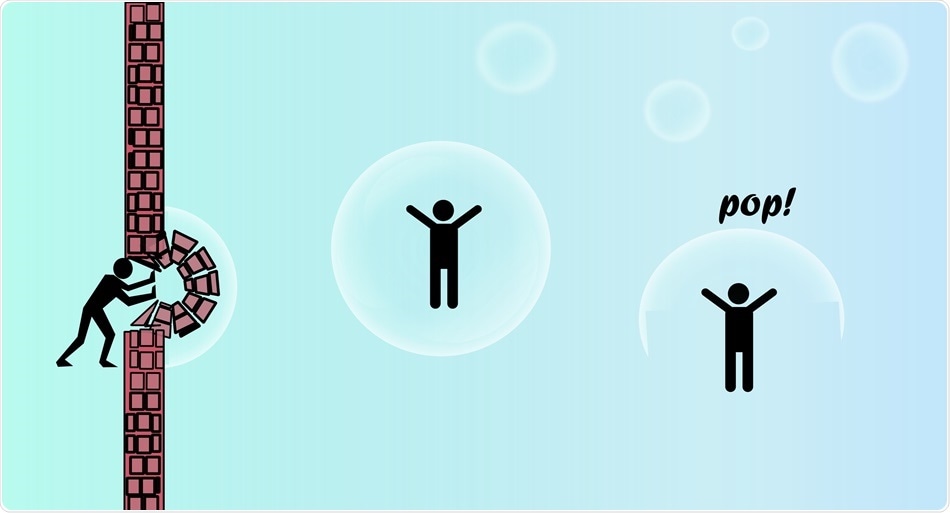Researchers have been wondering for several decades how large molecules like proteins travel through cell walls, also called plasma membranes, without any trace.

The researchers noticed that some peptides cross membranes by pushing against them. The peptides deformed the membrane into small circular buds. The buds then detach as small bubbles, which eventually “pop,” allowing the peptides to be released inside the cell. Image Credit: Ashweta Sahni.
This capability is part of what renders some drugs—which include certain cancer treatments and the COVID-19 vaccine—work. Moreover, it is also the way bacterial toxins gain entry into human cells and wreak havoc.
Diphtheria toxin is one such example and produced by Corynebacterium diphtheriae. It causes diphtheria, an acute and possibly fatal bacterial infection of the nose and throat. However, the mechanics of entry of these proteins into human cells have been a scientific mystery.
As reported in the ACS Chemical Biology journal, a new study finds the solution to that mystery. The research found the ways in which proteins travel through a cell membrane, a discovery that could lay a scientific foundation for improved ways of drug delivery into cells in the future, or for the treatment of illnesses caused by bacterial toxins.
It is almost like a magic trick, the way the membrane encapsulates these toxins.”
Dehua Pei, Study Senior Author and Professor of Chemistry and Biochemistry, The Ohio State University
Pei and his team of researchers from Ohio State have spent several years in their attempt to gain insights into how biomolecules like bacterial toxins enter a human cell. Their aim was to find ways to administer medications into those cells.
Through this study, the researchers found how certain toxins passed across the cell membranes, noted Ashweta Sahni, lead author of the study and a graduate student in Pei’s lab at Ohio State.
Researchers have been aware of how small molecules penetrate cell membranes, essentially by attaching to the membrane and then diffusing through it. However, they also understood that proteins cannot do this as they are very huge.
To date, the most familiar theory was that proteins pass through small holes, called pores, in the membrane, similar to the Parisian statue, Le Passe-Muraille, of a man passing through a wall. However, Pei’s earlier study did not support that hypothesis.
During the other projects the team worked on, Sahni observed that certain fragments of proteins, called peptides, cross membranes by pushing against them. The peptides tend to deform the membrane into tiny circular buds, which then detach as tiny bubbles called vesicles, which finally “pop” and enable the peptides to be released within the cell.
Then, the team noticed that two structurally distinct bacterial toxins also used the same mechanism. This finding led them to infer that this budding-and-collapse mechanism is a regular mechanism used by various large biomolecules.
This budding-and-collapse phenomenon was previously unknown, but we were able to witness it because we had the equipment, training and experience to know what we were looking at.”
Ashweta Sahni, Study Lead Author and Graduate Student, The Ohio State University
The researchers observed the budding-and-collapse in live cells using confocal microscopy, an imaging method that enabled them to focus on what occurred within the cells, and on the cell membranes, with these particular proteins.
According to Pei, the findings could pave the way for new drug therapies that employ this result to regulate the ways drugs enter a cell.
Source:
Journal reference:
Sahni, A & Pei, D (2021) Bacterial Toxins Escape the Endosome by Inducing Vesicle Budding and Collapse. ACS Chemical Biology. doi.org/10.1021/acschembio.1c00540.